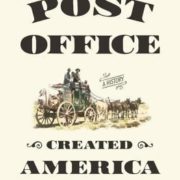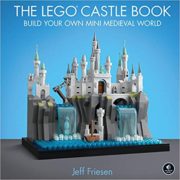Houseplants for All: How to Fill Any Home with Happy Plants by Danae Horst
I cannot tell you how many times I’ve impulsively purchased houseplants only to get them home and realize that perhaps I’m not able to provide an environment in which they’ll thrive. Yet I try. As of this writing, I have about 30, most of which do well enough alongside a few that sort of languish. A languishing plant is a sad sight to behold, so I sought a solution and found it in Danae Horst’s Houseplants for All: How to Fill Any Home with Happy Plants.
In her introduction, Horst admits, “Unfortunately, enjoying plants and keeping them happy do not always have a direct correlation” and she discusses her experience with collecting houseplants, unknowingly making mistakes, and watching them struggle or die. Like many of us who’ve watched our houseplants die slow deaths, Horst began questioning her plant-parenting abilities. After making a move with a handful of houseplants that she managed to keep alive, she continued caring for them and learning more about them, eventually having the “Aha” moment that she needed: “When I began to choose plants based on what they needed rather than just how I wanted my home to look, I found my plants seemed happier and healthier.” Aha, indeed!
In Houseplants for All, Horst debunks what she calls the “back thumb myth” and shares with us the essentials we must understand to be able to choose plants based on their needs rather than just our preferences. Also, she teaches us how to assess our space and what we’re able to provide, as well as advice for creating environments in which plants will thrive. Plus, she includes design tips and plant profiles throughout the book, which are accompanied by bright, beautiful photographs. Although a lot of information is packed into fewer than 200 pages, its arranged and presented in an approachable manner.
In section one, “the right plants for you,” we learn about the misconceptions and truths of light and humidity and how they impact the health and happiness of plants. Particularly helpful is the explanation of how light comes in through our windows and the definitions of the different types of light we’ll find within our homes. Also, Horst further defines the light terms we encounter on plant care cards. For example, “partial shade or mixed shade” for outdoor plants is equivalent to “a mix of direct sun and bright indirect light” in houseplants. Suggestions for how to measure light within your home, whether by observation, with a light meter, or an app on your phone, are included. Section one concludes with humidity and light strength “quizzes” that are less like quizzes and more like questionnaires with flow charts to help us measure and determine how much of each we do (or do not) have in our homes so we may plant accordingly.
Section two, “environment profiles,” is my favorite section of the book, as it breaks them down into five easily understood profiles: bright and sunny space, lower light space, humid space, indoor-outdoor space, and shifting light. Each profile begins with the pros and cons of having that type of space. For example, a pro of a bright space is that you’ll have more plant options, but you’ll need to water more often because they’ll dry out quicker. Each environment profile goes on to include the different types of light you might encounter within that profile, as well as specific suggestions for which plants will do well in that type of space. Detailed plant profiles, care, placement, and styling tips are also a part of each environment profile, as well as other tidbits.
Section three, the final section of the book, is applicable to caring for plants in all environment types, as it covers the “plant care essentials,” from the basics of choosing healthy plants at the store to various methods of watering and propagating them. “Plant Problems” and “Pets and Plants” are great subsections within this section.
Horst concludes her title with a list of further resources and a reminder that “plant care is a journey” and that we’ll no doubt make, as well as learn from, the mistakes we make along the way. In the 20 years that I’ve kept houseplants, I’ve made mistakes aplenty and learned a lot. I wish that I would’ve had a book like this back when I started my journey, but I’m glad to have it now. I recommend it to houseplant aficionados and beginners alike.
As always, happy reading.











